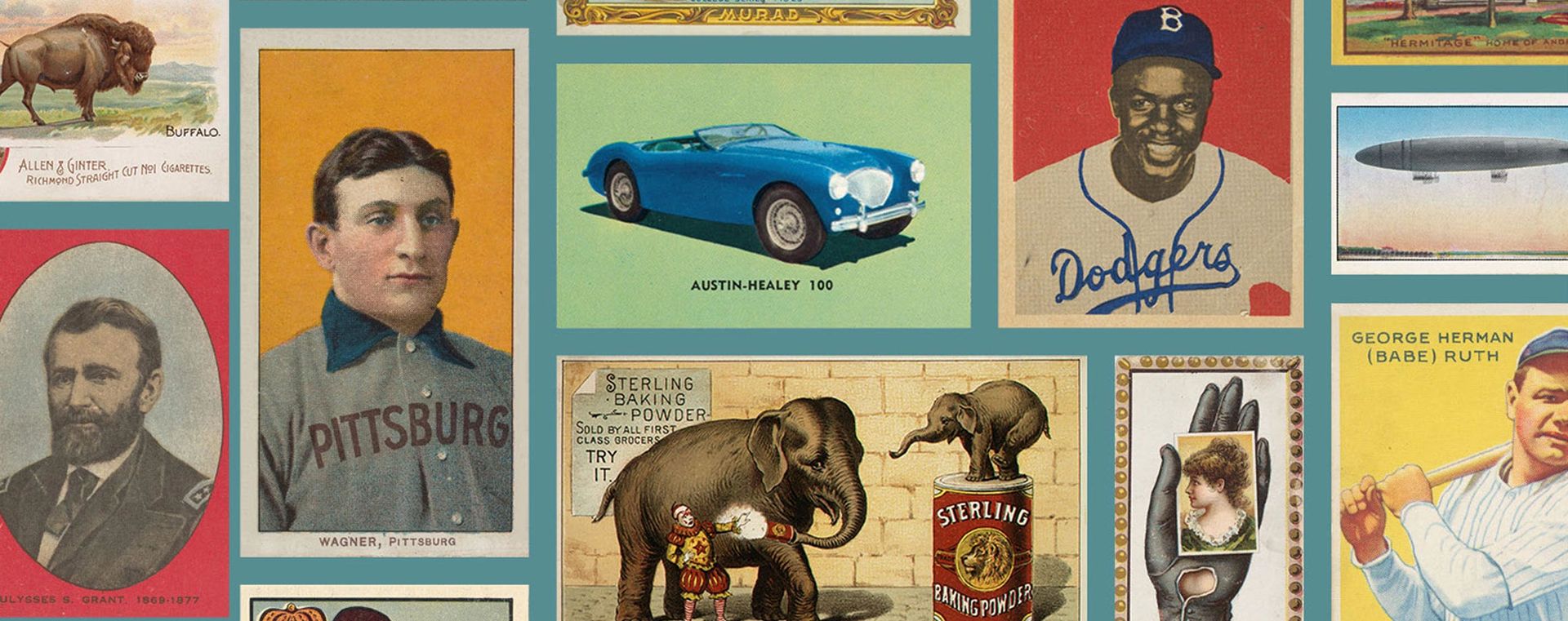
Postcards
Souvenir Post Card Company. "Greetings from the City of New York" Postcard, ca. 1905. Commercial color lithograph with applied glitter; Sheet: 3 1/2 x 5 3/16 in. (8.9 x 13.1 cm). The Metropolitan Museum of Art, New York, The Jefferson R. Burdick Collection, Gift of Jefferson R. Burdick (Burdick 405, PC70.54)
As opposed to advertising insert cards—the dominant mode of product endorsement used by American businesses in the period after the Civil War—that were typically given away or included in goods, free of charge, postcards and greeting cards were generally purchased by consumers. These cards show the ephemeral histories of modern America and served multiple purposes: they were utilitarian objects meant to be used, but they were also frequently collected because of their subject matter, design, or historical interest.
Initiated by companies as advertisements in the 1860s, within a decade the nature of postcards began to change as they increasingly became a suitable and intimate form of correspondence between friends. Due to printing and postal regulations that effected print runs and circulation, postcards were not instantly popular. In 1898, Congress passed the Private Mailing Card Act, which for the first time allowed independent companies to publish postcards. This deregulation enabled the widespread production of postcards and increased their use as simple and quick channels of communication and visual engagement. By the end of the nineteenth century, these often decorative cards were highly esteemed and avidly collected.
Detroit Publishing Company (American). Cathedral Rock, La Jolla, Near San Diego, California, No. 6118, 1899. Commercial color lithograph; Sheet: 3 1/4 x 5 7/16 in. (8.3 x 13.8 cm). The Metropolitan Museum of Art, New York, The Jefferson R. Burdick Collection, Gift of Jefferson R. Burdick (Burdick 428, PC143.163)
Burdick catalogued the postcards in his collection according to common thematic classifications such as: viewcards, greetings, comics, expositions and events, art, novelties, and pure advertisements. Burdick's collection, which was housed in seventy-four albums and ranges in date from 1873 to 1940, features popular public interests and notable publishing companies, and documents the rapid advancements in printing technologies. The Detroit Publishing Company is perhaps the most comprehensively represented, with twenty-three albums dedicated to their work in addition to several boxes of unnumbered cards.
Reuben H. Donnelley Corporation, Chicago. Time and Fortune Building at the Century of Progress, from the Chicago World's Fair series (PC225-1), 1933. Commercial color lithograph; Sheet: 3 9/16 x 5 1/2 in. (9 x 14 cm). The Metropolitan Museum of Art, New York, The Jefferson R. Burdick Collection, Gift of Jefferson R. Burdick (Burdick 435, PC225-1.1)
The sizable and incredibly diverse exhibitions known as World's Fairs or Expositions, which were platforms for multicultural exchange and the sharing of ideas about science and technology (and later culture), form a large grouping in Burdick's collection. A beautifully colored series of lithographs illustrates the important locations and buildings erected for the Century of Progress International Exposition held in Chicago in 1933. Rather than focus on Chicago's past, as the exposition had originally intended, these cards demonstrate the new feeling of hope for a bright future in America, even in the midst of the Great Depression. In addition to an abundance of viewcards devoted to the development of the city of New York, its buildings, and neighborhoods, Burdick's collection also includes a series of cards from the 1939 World's Fair that demonstrate the innovative printing technique of printing in color with a metallic finish, called Metalite, a patented technology developed by the Gemloid Corporation.
Gemloid Corporation. Night Display Central Mall Fireworks, from the New York World's Fair series (PC225-6), 1939. Commercial color lithograph; Sheet: 3 7/16 x 5 1/2 in. (8.7 x 14 cm). The Metropolitan Museum of Art, New York, The Jefferson R. Burdick Collection, Gift of Jefferson R. Burdick (Burdick 435, PC225-6.5)



